Many scholars contend that Genesis borrowed the stories of creation and the Flood from Babylonian manuscripts, particularly the Enuma elish. They suggest that biblical writers during or after the Babylonian Exile invented the early parts of Genesis by copying ancient Babylonian myths. But were the Babylonians really the first ones to perpetrate an account of the Flood? Or does a memory of Noah’s flood appear earlier, in Egyptian Hieroglyphs?
The following article is a summary of Egypt’s Hieroglyphs Contain a Cultural Memory of Creation and Noah’s Flood by Gavin Cox, and of the surrounding discussion and research pertaining to it. The views expressed do not necessarily reflect those of New Creation.
Some Egyptologists have pointed out the biblical account of primeval history is more similar to that of Egypt than that of Babylon. This should not be surprising since either Ham (Noah’s son) or Mizraim (his grandson) founded Egypt. Much later, the Israelites spent 400 years there. In fact, it appears that Genesis 1–2 may have been written by someone who understood Egyptian primeval history and purposely corrected mistakes in the Egyptian’s version. Moses, who was raised in the Egyptian court, seems to be the ideal candidate.
In a 2013 article, Gavin Cox studies the connections between Egypt’s primeval history and that of Genesis. He also examines Egypt’s understanding of the Flood and the relationship between the Hamitic Cosmology and the Shemitic Cosmology.
What did the Egyptians Believe?
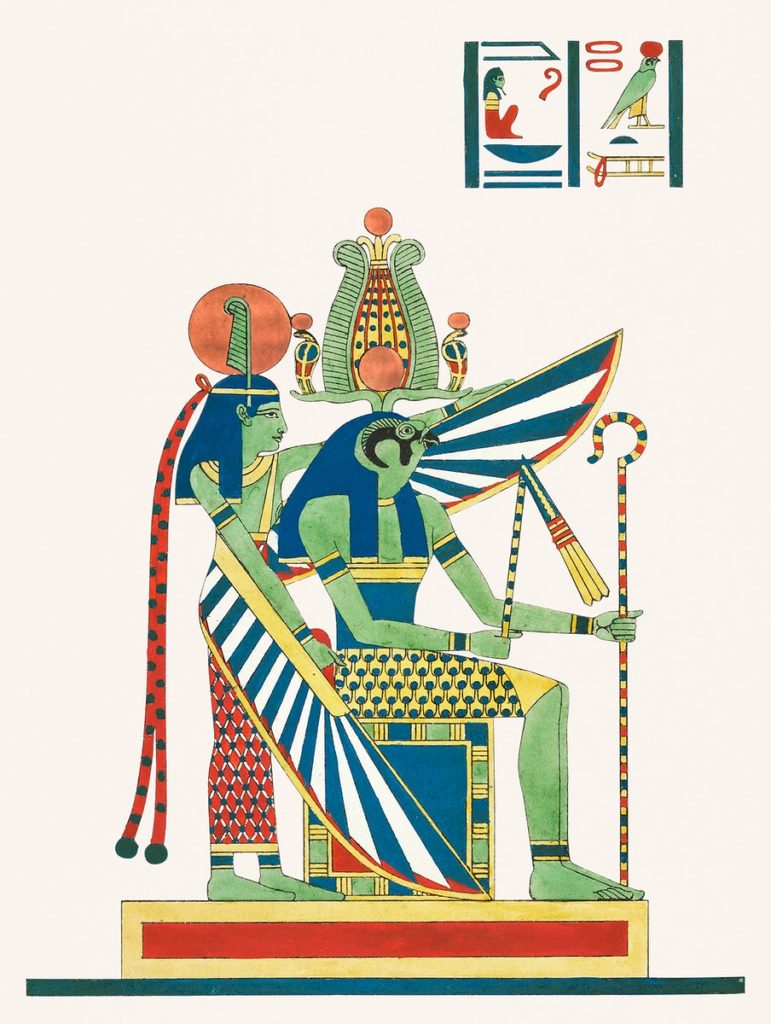
There are three main creation stories that emerged in Egypt from Heliopolis, Memphis, and Hermopolis. Some similarities between these stories are that they all feature a primordial ocean, a primeval hill, and a deification of nature.
The story from Heliopolis features a group of nine gods. It speaks of Atum, the creator god, who emerged from the primordial waters and created two other gods, Shi and Tefnut, by sneezing and spitting them out. The other gods were the descendants of Shi and Tefnut. This may be reminiscent of God creating Adam and Eve, who then populated the earth.
According to the story from Memphis, Ptah created by conceiving in his mind what should be created and speaking it into being. This seems strikingly similar to the biblical account of God speaking creation into existence.
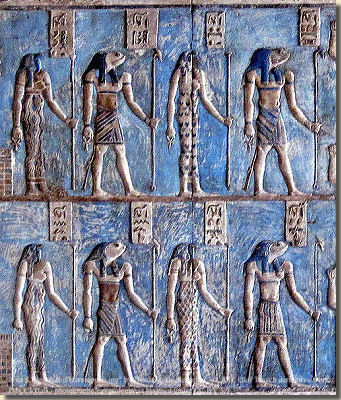
The story from Hermopolis features a group of eight gods, known collectively as the Ogdoad, who were born in the primeval waters. They represented chaos from which a creator-god brought order.
Some Interesting Parallels
In Genesis 1:1, the word for “beginning” literally means head. In Egyptian hieroglyphs, the symbol used to describe the beginning of time is that of a man’s head.
Genesis 1:2 discusses four phenomena. Similar concepts appear in Egyptian creation stories in the form of gods. These are outlined in the table below:
| Genesis 1:2 | Egyptian Creation Stories |
| Formlessness, confusion, chaos, emptiness | Hehu: Formlessness/void |
| Extreme darkness | Keku: Darkness |
| Deep Sea | Nun: The deep primeval ocean |
| Breath, wind, spirit | Amun: Wind (breath) of God |
On day two of creation, God formed the “firmament”. The Hebrew word for “firmament” is related to a word which means beat, stamp, or spread out. Meanwhile, two common Egyptian words for “creation” derive from the word meaning hammer out from metal.
Adam
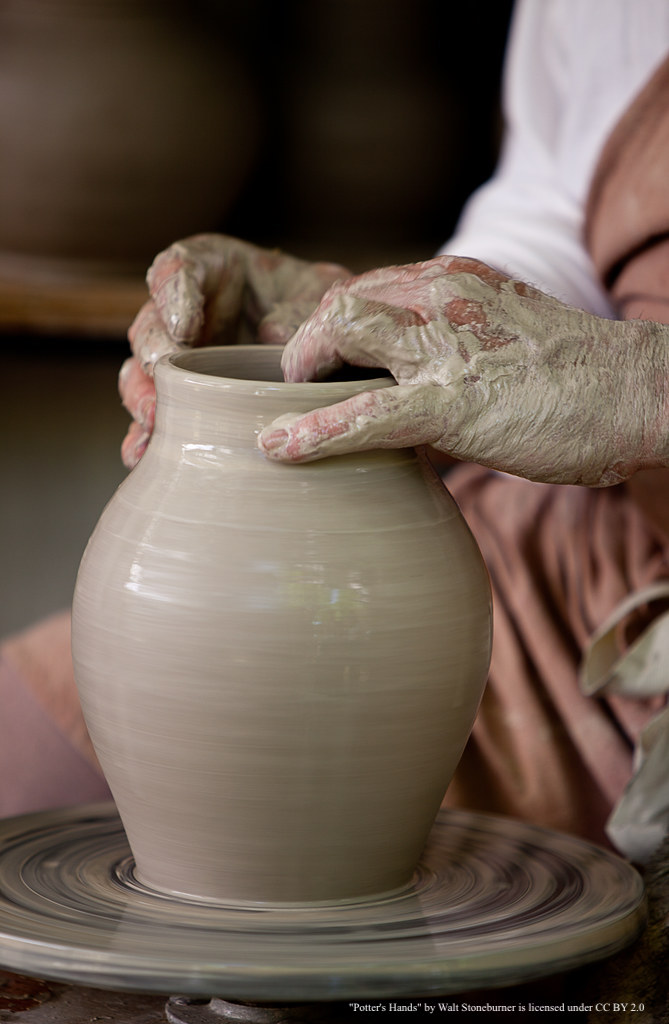
The Hebrew word for “ground” shares a root with the word for “mankind” and the word “red”. Similarly, the Egyptian word for “red” shares a root with the word for “mankind” and the verb used to signify the forming of clay.
Creation by Word and Act
Just as God created the universe by speaking it into being, Egyptian mythology contends that life was created according to the word of a god. One inscription records that Atum created animal life by commanding it to be, and another describes Ptah thinking and so creating. This stands in contrast to the Babylonian myths in which creation by word does not appear.
Genesis 1:6–8 describes God separating waters from waters with the firmament between. This is similar to the Egyptian inscription which describes the heavens being separated from the primeval waters and from the earth.
The following table summarizes similarities between the Hermopolis creation story and the Genesis creation account.
| Hermopolis | Genesis |
| 1. The chaotic deep | 1. The chaotic deep |
| 2. The breath (Amun) moving on the waters | 2. The breath of God moving on the waters |
| 3. The creation of light | 3. The creation of light |
| 4. Emergence of the hills from the waters | 4. Emergence of land from the waters. |
Shem and Ham
The similarities between the Genesis account and the Egyptian myths are striking. Cox suggests that these similarities are due to a borrowing of values between two brothers: Shem and Ham. He says, “Ham, opposed to the true faith of his father Noah, and brother Shem, established his own rival belief system.” The biblical account derives from the Shemitic Cosmology, while the Egyptian myths follow the Hamitic Cosmology.
The Babylonian Flood Tablets
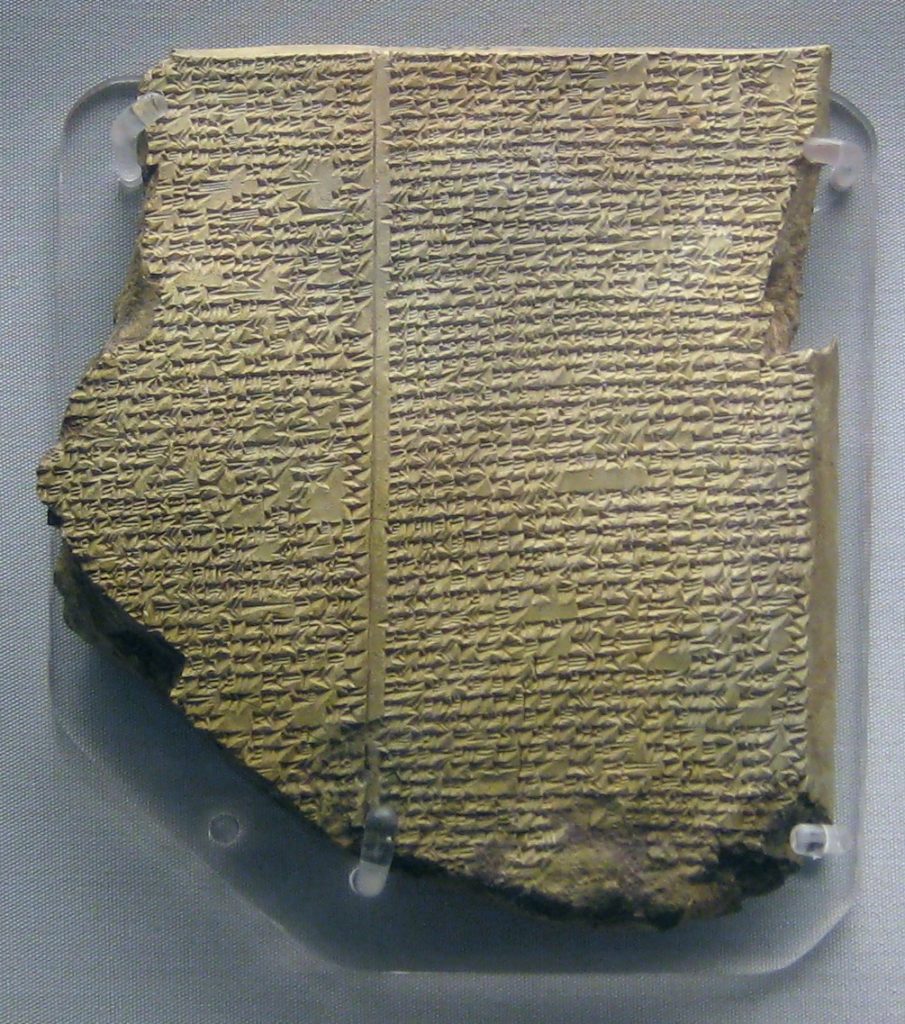
One of the most notable Babylonian flood stories, the Gilgamesh Epic, features a flood survivor named Ut-napishtim. Other flood stories have different names for the flood survivor such as Zisuthrus, Deucalion, Ogygus, Dardanus, Atrakhasis, and Ziudsuddu.
While Babylon has many flood stories, Egypt has none, which seems surprising, since flooding was a common occurrence in Egypt.
Cox notes that while the flood survivor is named in almost every Babylonian story, his family is either ignored or left anonymous.
Despite the lack of an Egyptian flood story, Cox seeks to demonstrate that the names Noah, Shem, Japheth, and Ham are Egyptian names. The link between the biblical Flood account and Egyptian mythology appears in a creation account rather than a flood story.
The details of the creation and Flood accounts would have been handed down through the Shemite line to Abraham and his descendants, including Moses. Over time, details may have been lost, compressing the main events of 1656 years into an oral tradition passed from one generation to the next.
Similarities Between Creation and the Flood
Cox draws a comparison between the four primeval elements and the four men who survived the Flood. These are outlined in the table below:
| Genesis 1:2 | Flood Patriarch Name Meaning |
| Deep | Noah: rest, comfort |
| Wind/Spirit of God | Shem: name, glory, representative |
| Formlessness/Emptiness | Japheth: spacious, wide, open |
| Extreme darkness, black | Ham: black |
Noah and His Family in Egyptian Myths
Cox suggests that if these names are indeed parallels to the four primeval elements, then one of the aforementioned Egyptian creation accounts may be a re-telling of the Flood story. Recall that the Hermopolis creation story features a group of eight gods. Could these represent the eight people who survived the flood?
The eight gods, known as the Ogdoad, consisted of four males and their female consorts: Nun and Naunet, Amun and Amunet, Keku and Kauket, and Hehu and Hauhet.
The names “Noah” and “Nun” have the same meaning, and speak of quiet, tranquil abiding. Noah is associated with the Flood, while Nun is associated with primeval waters. It seems likely that the Egytpian god Nun is based on a memory of biblical Noah.
The name “Shem” means name, representation, or glory. The word “Amun”, which represents the next god in the Egyptian Ogdoad, means hidden-of-name, heaven, or sun. This range of meaning overlaps significantly with that of Shem’s name. Additionally, Amun is associated with a flood. Therefore, Amun may represent Shem.
“Japheth” means spacious, wide open, youthful, and open-minded. “Heh”, the next god in the Ogdoad, has a name meaning great numbers, searching, and treading. While these meanings are not an exact match, they overlap to some extent. Heh is associated with inundation water, and may represent Japheth.
The name “Ham” means hot, black, noise, or troubled. “Kek”, the final god in the Ogdoad, means darkness, flood water, or twilight. These similarities suggest that Kek represents Ham. Additionally, Kek is also known as Horus, therefore Ham = Kek = Horus.
In addition to the similarities between name meanings, the family structure of Noah’s family and that of the Ogdoad is identical, since Nun and Naunet were the parents/creators of the other three male gods and their female consorts.
Patriarchal Ages
According to Genesis, the pre-Flood and post-Flood patriarchs lived for long timespans. Noah lived 950 years, and Shem lived 600 years. Ham and Japheth probably had similar lifespans to that of Shem. These patriarchs, who survived to see many generations of descendants, likely left immense legacies amongst their descendants.
Ham, Ruler of Egypt
Egyptian history records a dynasty of long-lived kings, sometimes referred to as demi-gods. Could these represent the long-lived Flood survivors? The Egyptian word for “old age” comes from the same root as the name of the god “Nun”, whom Cox equates with Noah. Additionally, the Egyptian phonetic equivalent to the name “Shem” means to be old, and the Egyptian phonetic equivalent for the name “Japheth” means to attain old age. Finally, the Egyptian phonetic equivalent for the name “Ham” means greying (of the hair).
According to the Psalms (78:51; 105:23, 27; 106:22), Egypt is the “Land of Ham”. Recall that the name Ham can mean black. Is it coincidence that the Egyptian hieroglyphs for Egypt refer to the country as “Black-land”? Additionally, the land of Egypt is figuratively referred to as Horus. Recall that Horus is the equivalent of Kek, the god that Cox equates with Ham. It seems that Ham is closely linked with the name of Egypt itself.
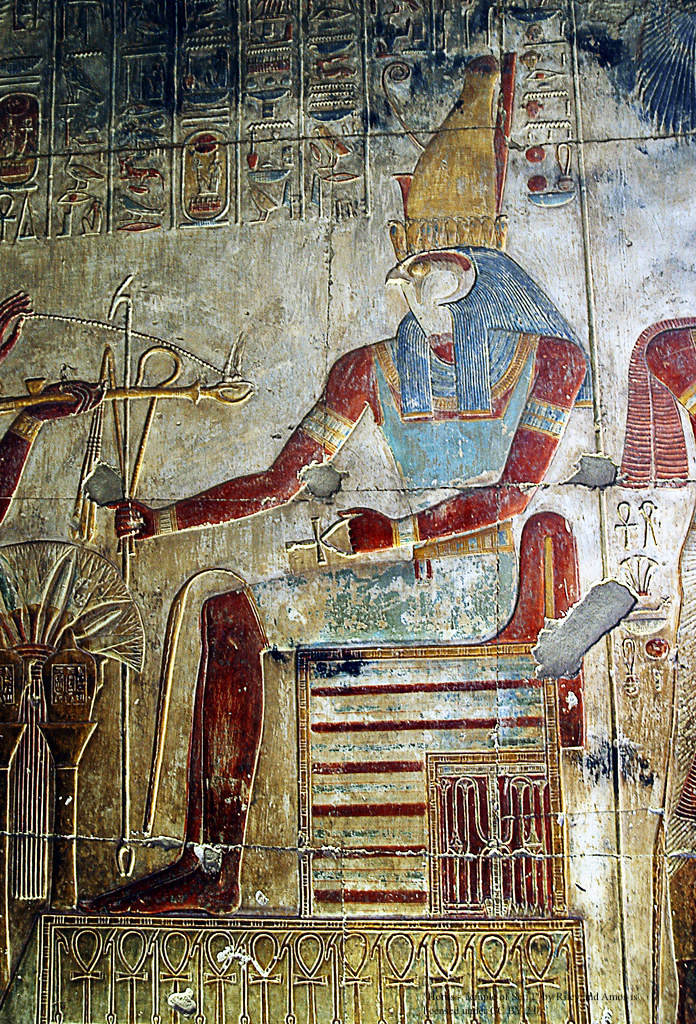
The Children of Horus
According to Egyptian records, Horus had four sons: Qebehsenuf, Amset, Duamutef, and Hapi. If Horus represents Ham, could these refer to the four sons of Ham: Cush, Mizraim, Put, and Canaan? Ham would have passed the story of the flood on to his four sons, and they may have influenced the Egyptian language, especially in regard to flood vocabulary. Cush, Mizraim, Put, and Canaan are all Egyptian names. The root for “Cush” means flood water, the root for “Mizraim” means origin of the water, the root for “Put” means flood, and the root for “Canaan” means flood.
The Family of Osiris
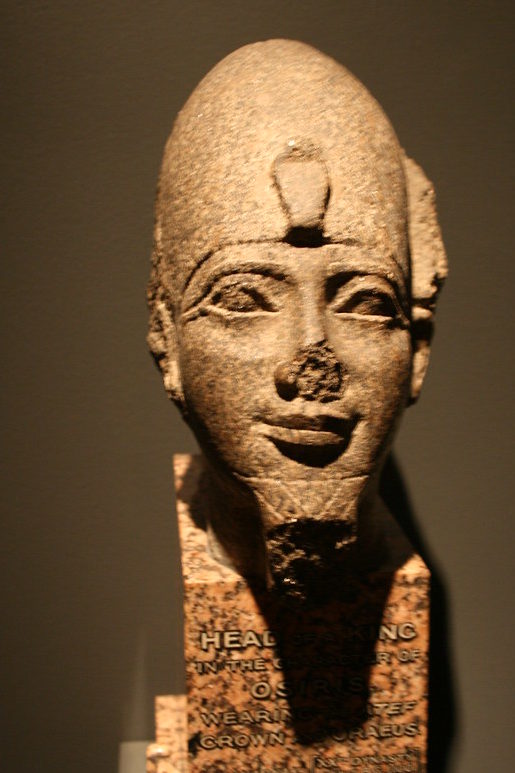
Stories of Osiris and his family derived from the earliest periods of Egyptian history and persisted throughout Egyptian history. According to Egyptian mythology, Osiris was the father of Horus. If Horus is Ham, is Osiris Noah?
Epithets of Osiris label him in a variety of ways. These include Osiris the Long-Lived, Osiris the Weary-Hearted, Osiris the Drowned One, and He-who-is-in-the-box (Osiris). These all seem descriptive of Noah. Furthermore, one inscription links Osiris with Nun, the flood god, whom Cox associates with Noah.
Noah’s Ark in the Hieroglyphs
The hieroglyphic sign for the Ogdoad carries two meanings. The first is eight, which is appropriate, since the Ogdoad represents a group of eight gods. The second meaning, however, is significant, since it is ship. The hieroglyphic sign includes a long rectangle with eight lines protruding from the top. Could this represent eight people, Noah and his family, in the ark?
A wall inscription sheds light on the issue. It depicts the Ogdoad standing in a ship. Another inscription, the Solar Bark, shows a similar image; it clearly depicts four males, each with a female consort, standing in a ship.
The Ogdoad: Creators or Re-Creators?
Egyptian mythology depicts the Ogdoad as creators, but perhaps it would be better to see them as re-creators. One depiction portrays the eight gods with hoes, tilling the soil. This is generally interpreted as the first acts of creation, but perhaps it instead represents Noah and his family making a new life after the Flood. According to Genesis 9:20, Noah became a farmer and planted a vineyard.
Conclusion
Egyptian records contain several creation stories, but the one that matches the biblical record of the Flood the closest is the story of the Ogdoad. Egyptian Hieroglyphs testify to the historical accuracy of the Genesis account by reflecting glimpses of truth through a corrupted and pagan lens. Further work is necessary to study the links between Egyptian mythology and biblical history, but many connections are already apparent.


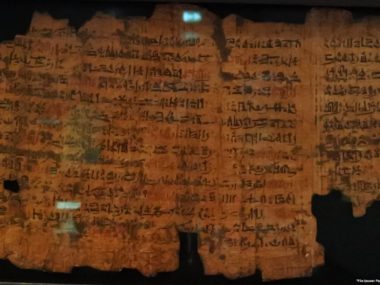

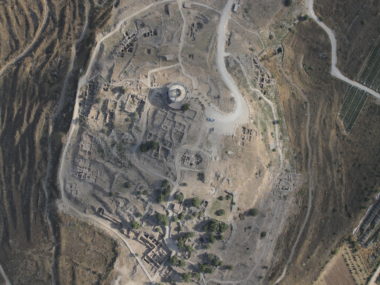
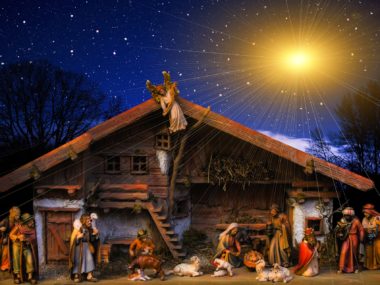
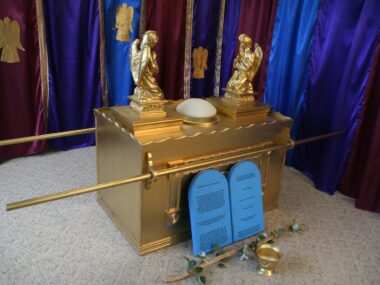




Interesting points and loads of research and well done.
I don’t see Ham as meaning black. I don’t no why ehypt is called the land of ham since even Cannan wasa from Ham. In fact the first smart people, Sumerians wewre from ham but not in africa.
Anopther cute point is that Ophir is from Shem but this is, i say, the origin of the name Africa. so Solomon sent ships to africa to get apes and birds gold etc.
later the Greeks heard the area to the south was ophir/Africa and corrupted it to the whole continent.
Hi Robert,
Thank you for your comment. The name Ham carries multiple meanings, one of which is black. I believe that Cox saw this interpretation as a link to the rich black soil deposited by the Nile river. Your theory regarding Ophir/Africa is interesting.
I have heard the Ham equals black thing before. however ham was named by the Noahs. and likely few descendants of ham ended up in Egypt. anyways glad you thought the Ophir/africa thing was interesting. Actually a people there used to be called AFARS.
I speculate the Greeks asked what the furthest southern nations were and a corrupted memory remembered Ophir and then the Greeks thought everywhere was OPHIR and poof a continent called Ophir or Afar(ica). likewise they call Assyrian empire everywhere ASIA.
Speculation.
Shem’s lines are concentrated in Middle East. ” Blessed be the Lord” means Shem’ line will be the carrier of the true gospel, for Salvation belongs to the Jews [ I forgot the verse ]. Japheth’s line are the westerner. May God enlarge Japheth [ Gen.9:27 ] contributed greatly in the field of science, discoveries of New World, business, politics, building construction, etc. Japheth expand or enlarge. Ham, because of his sin, introduce false religion, witchcraft, etc. African’s belongs to his line. Ham’s lineage will serve both Japheth and Shem. Presently, we could trace Ham’s line in Africa, South East Asia, ,etc.They normally employed, serving Japheth and Shem’s lineage. However, in Christ, the curse is gone.
Hi Edgardo,
The population scheme that you suggest has been popular in the past, but may be problematic. Genesis 10 suggests that many of Ham’s descendants settled in Mesopotamia and the Southern Levant (modern day Israel). Multiple Mesopotamian empires ruled the ancient known world. It is important to remember that not all of Ham’s descendants were cursed by Noah, only Canaan. The fulfillment of this curse may have occurred when the Israelites (descendants of Shem) and the Philistines (likely descendants of Japheth) conquered the land of Canaan and forced the remaining Canaanites into slavery. Today, there are no known descendants of Canaan remaining.
All nations of the earth were involved with false religion and witchcraft, Ham’s sin (assuming you mean his sin against Noah) had nothing to do with that.
Revelations, shows a time near the end in the future. This time is like the time the Egyptians were chalenged to believe with big signs. The reason Egypt was chosen as this place of growth and departure of the chosen, could be linked to its conection with the Arks resting place and the regular food supplying flood in Egypt. Of course the whole planet is the place of the growth and departure of the chosen, and the last departures, could be among big signs again. It is my own belief that the date and time of the Crucifixion, is written into the fabric of the Universe, and that God always has a diplomatic service to manage splits from His authority. This service is continuously trying to design an up bringing parental system to raise the King needed for unity. The opposition is as well, in a more crude way, but Jesus was it. The word, Unity in numbers abc123, is 21 14 9 20 25 and God is 7 15 4 and 7 + 15 + 4 = 26 as is 2 + 1 + 1 + 4 + 9 + 2 + 0 + 2 + 6 = 3 + 5 + 9 + 2 + 7 = 26. The Solar Eclipse showed me that the 27th of April 31AD at 15:00 Hours was the Crucifixion date and time, see http://www.jesuscrucified31ad.blogspot.com. The work of God is to increase your own belief in Jesus, see John 6:29.
Good post. So many things we think are in the Noah story….just aren’t. https://youtu.be/BgPyJvqWRhQ LINK to TEACHING
Very helpful info. Thanks!
What we see is the Egyptians turning away from the True God of Creation, and to idolatry instead. While there are similarities, coming from the original creation facts, the Egyptians crafted a religion of gods, rejecting the actual God of creation, the only God that exists. The creation and the flood came first, then civilizations like Egypt and Babylon told corrupted versions of the facts as they occurred.
Wrong essentially. Did they describe in all things right? Or Are we misinformed and indoctrinated?? Egyptians never originally or ever believed in multiple Gods. Their beliefs scream thousands of years to this day. The Unity of One Creator making shaping and forming all things together. To marry a wife bear children building a home as in Unity we grow expand and live together ..Thomas Erick Widener born 6th month on the 26th day in the year 1977.
A great read and we’ll researched. Language is a fascinating insight into an otherwise sketchy past. Would it be fair to say that the flood was very likely a recent memory in the minds of Egyptians but retold within the context of their beliefs. The basic story of creation and the flood appears in some ways to have been retained despite changes to the proto language of Noah and his sons and possibly the confusion of tongues at Babel?
Needed to be worded better. This sounds like all accounts of a flood were made-up, invented. One is true and one is taken from it.
Hi Peter,
Thank you for the feedback. I will edit the article to clarify.
La geología moderna sin tener en cuenta el diluvio, no tiene sentido
Thank you! I’m so amazed at the research you do and the discoveries you find! Your ministry is such a blessing to the archaeologist in me! I just love how The Bible shines a light on the various objects you discover!
Thank you so much, I appreciate you!
BlessU!
Michèle
Thank you!
The names of Noah’s children written in Hebrew reflect exactly that of the Egyptian Hieroglyphs cycle of the sun moon and star’s in cognitive of the season over a period measuring in a 1 year cycle.. Isreal.. 1 year is broken down into 3 season’s with 4 months each.. An Inauguration season in which at the appearance of the Dog Star Sirius it began to grow increasingly hot. Every year at this time the Nile they called Hapi began to flood violently. After the flood subsided the season of Emergence began. Of the earth from under the waters. Dry land appeared.Planting and sowing in the life producing fertile soil. Which meant the continence of life and the family. After thus the season of Shemu havest time. That is 1 year 3 season’s 4 month’s each. The egyptian word was Ogdoad and it means 8 which is the meaning in the Hebrew story of Noah and his 3 children along with his and their wife. Its the key of life that is overlooked by everyone looking for somthing deeper..A man and his wife..Key..his 3 son’s and 3 wive’s..key..
Unity and marriage is the name and meaning of their river of Light. The nile was the center of life that the Moon Sun, and Star’s as Isis Ra Elohim, Isis Horus Osiris are the word’s no human could have written except the One true Creator as the word of God,Hieroglyphs
The same pattern is his Signature perfectly imparted on all things. Heaven and Earth are just One joined perfectly. The Sun never rise’s nor set’s. In a constant state forever One day and One night. Measured by the shadows of the moon. An Ark which is the measure of 30 as well as the Hebrew letter and meaning of Lamed. And Its function derived from Teaching, learning, and Lord and Shepard Mother Father also The moon. And this learning was the key with our movement of the Earth relative to the Sun and Star’s. Time was discovered and Hour’s and Day’s for season’s and Year’s. Egypt never worshiped the sun,moon or star’s and clearly it makes
Perfect sense it echo’s from the beginning. Hieroglyphs which is said to be the Word or words of God. Written in plain sight. Is Ra Elohim
Hi Thomas, Your correlation between the names of Noah’s sons and the Egyptian year is an interesting one. Thank you for sharing.
This is fascinating.
Clearly, if Noah was my father and I rejected his religion and started a new society (Ham-Shem), I’m claiming myself to be a God. With old world genes that live longer I’d already Be seen as a God to survivors of the flood(see the sumerian kings list)- I would then unite the already warring tribes of southern and northern Egypt, I wouldn’t pay homage to my father’s ideals being cursed by him and what not.
Rulers only rule because people don’t have the knowledge or resources to object.
Rewrite the history to stay in power. Game plan of the ruling class since the beginning of time.
My theory, Ham-Shem , United surviving tribes of the flood created a religion worshipping the pre flood gods again- used the populations ignorance to elevate themselves to godhood.
No, the ogdoad has nothing to do with Noah’s flood. The 8 spoked wheel with the pagans represents time and space. It is their doorway for their savior apollyon I’m guessing. Our 8 or doorway is through Jesus Christ and is not salvation through the flesh like the pagans seek
Hi Joshua, Thanks for your thoughts on this! I am not sure what 8-spoked wheel you are referring to; perhaps the one associated with eastern religions? If so, that is from a much later time period and is probably not related to the Egyptian Ogdoad.
The famous linguist and historian Hugh Nibley wrote about everything you did 70 years ago. This is not new research.
Thank you for pointing this out. I was not aware of Nibley’s research on this topic. I am surprised that Cox did not cite his work.
Why do the pictures of the “God’s” have bird and fish heads, is this to differentiate them from the common man?
Hi Valerie,
My understanding is that the Egyptians displayed their gods with the heads of various animals to help portray the characteristics and abilities of each god, which they believed to be, in some way, similar to the animal chosen to portray that god.
The article says that Ham’s four son’s may have influenced the Egyptian language. IMO they would have done more than influenced but changed it completely. I say this because God scattered the people from Babel by; confounding’ their language so they couldn’t understand each other. So, if Ham founded Egypt, he would have spoken the same language as the people of Babel before. But that would mean his son’s had to come from Babel to Egypt. Maybe they left Egypt to Babel and returned when the language was confounded?
The Ogdoad is older than the Bible
My understanding is that the earliest known reference to the Ogdoad dates to the 18th dynasty, about the same time that the Pentateuch was written. Yet, it records earlier events or stories, just as Genesis refers to earlier events.